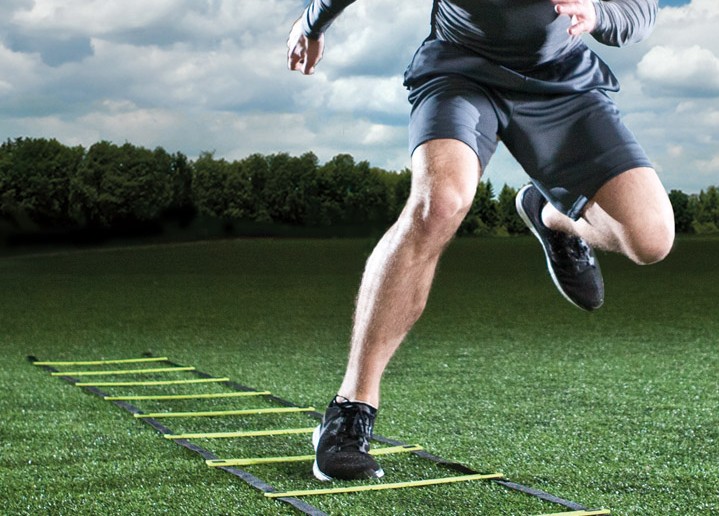Kettlebells are one tool used in the metabolic conditioning of athletes. Some of the exercises that are specific to kettlebells lend themselves to a conditioning workout. One of these exercises is the kettlebell swing.
The kettlebell swing involves standing up. It uses most of the muscles of the body. It can be performed rhythmically in nature, so it lends itself to being done for periods of time (for example, swing for 60 seconds). For all of these reasons, it is an ideal metabolic conditioning exercise.
It also lends itself to being used by smaller teams in a team strength and conditioning setting. The challenge with using kettlebells in a large team setting like football is that you would have to have enough kettlebells, of the correct weight, to allow a significant part of the team to train at one time. But, in a team setting with 10-20 athletes training at one time, this is not as big of an issue as you’d need enough kettlebells for 4-5 athletes at a time to use them.
If we are using the swing as a conditioning tool for athletes, then the exercise needs to be performed athletically. This means the athlete should approach the kettlebell and take an athletic stance:
- Chest out, shoulders back
- Feet between hip width and shoulder width apart
- Hips pushed back slightly and knees unlocked
From here, the athlete should pick up the kettlebell and hold it between their legs. Arms should be straight but not locked out. Keeping their knees unlocked, the athlete will push their hips back, which will force the kettlebell back as well. Without pausing, the athlete will extend their hips which will “swing” the kettlebell forward until the arms are parallel to the ground. There is no need to swing the kettlebell higher than that.
Common mistakes with the swing include several things:
- Allowing the wrists to flex during the swing. This is a great indication that we’re using too much weight.
- Allowing the chest to collapse or the shoulders to slump forward. This is a potential injury for the lower back.
- Feet are too wide (i.e. wider than the shoulders). While this is fine for Joe Fitness, there is nothing that we do in sports with our feet that wide so the transfer is going to be limited.
- Flexing the elbows. This makes the exercise a lot more difficult than it needs to be.
- Swinging higher than parallel. I’m not in favor of this due to the potential for shoulder injury. Will doing this cause an injury? Not necessarily, but people aren’t terribly smart when it comes to working out so without the caution there’s always a chance…
This exercise can be done for conditioning, in which case it is performed rhythmically. This means performing it nonstop for a period of time. Typically this is going to mean lighter weights. It can also be performed as a strength movement, in which case it will be performed as a series of repetitions with a pause between each rep (push the hips back, extend the hips and swing the kettlebell, reset, repeat) shooting for three to six repetitions per set with a heavier kettlebell.
Revised June 16, 2024




